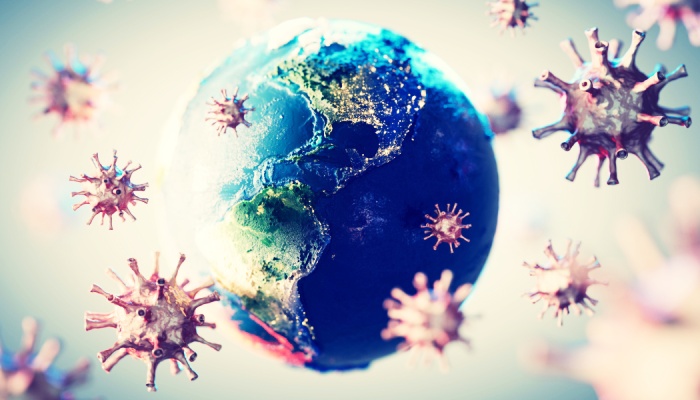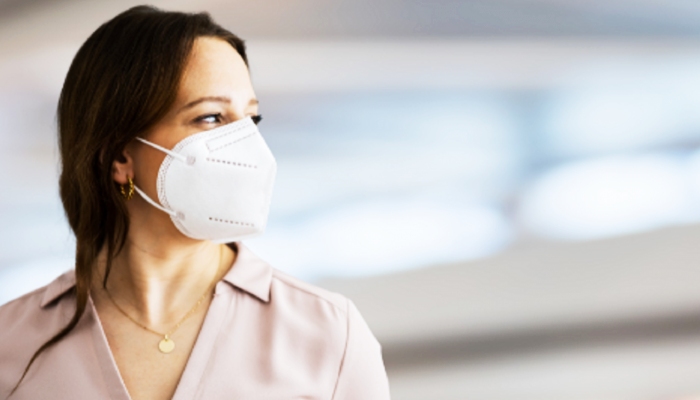Navigating the World of Medical Supplies During a Pandemic
In the face of a global pandemic, the world’s attention turns sharply towards the healthcare sector, particularly focusing on the availability and accessibility of medical supplies. This unprecedented situation not only highlights the crucial role of medical equipment and pharmaceuticals but also exposes the fragility and complexities of the supply chains that make these essential items available. Export restrictions in some countries, coupled with increased demand worldwide, have led to a global shortage of critical medical supplies, impacting not only the nations implementing these restrictions but also creating ripple effects in other countries.
This, in turn, has triggered panic buying and stockpiling in various regions. Furthermore, the significant difference in domestic production capabilities between countries has become evident, with some nations having to rely heavily on imports to meet their medical supply needs. In response to these challenges, some countries have invoked the Defense Production Act to prioritize the production of essential medical supplies for domestic use, further highlighting the intricate interplay between nations in the quest for adequate healthcare resources.
In this article, we delve into the intricate world of medical supplies during a pandemic, exploring various facets from the surge in demand for specific products to the nuanced differences between pharmacies and chemists.
A particularly intriguing aspect that has emerged in recent times is the concept of “Vaccine Detox Kits” – a topic surrounded by controversy and misinformation. By shedding light on these areas, this article aims to provide a comprehensive guide to understanding and navigating the medical supply landscape in times of a global health crisis.
Understanding the Pandemic’s Impact on Medical Supplies

The Global Ripple Effect on Medical Supply Chains
The onset of a pandemic brings an immediate and overwhelming demand for medical supplies across the globe. This surge encompasses a wide array of products, from personal protective equipment (PPE) like surgical masks, and gloves to more sophisticated medical devices such as ventilators and testing kits. The sudden spike in demand creates a ripple effect throughout the supply chains, often leading to shortages and logistical challenges. Manufacturers face unprecedented pressure to ramp up production, while healthcare providers scramble to secure adequate supplies to safeguard their staff and patients.
Challenges in Distribution and Access
The distribution of medical supplies during a pandemic is fraught with challenges. These range from manufacturing delays due to disrupted supply chains for raw materials to logistical hurdles in transporting goods amidst lockdowns and border closures in affected others. The situation is further complicated by competition among nations and entities for limited resources, sometimes leading to bidding wars and political tensions.
Moreover, the pandemic magnifies existing inequalities in healthcare access. Developing countries and under-resourced communities often find themselves at the end of the supply chain, struggling to procure essential medical items. This disparity not only affects the country’ immediate response to the pandemic but also has long-term implications for global health.
Adapting to a New Normal
In response to these challenges, the medical supply industry has seen significant adaptations. These include diversifying supply sources to reduce dependency on single manufacturers or countries, increasing stockpiles of critical supplies, and leveraging technology for better inventory management. Governments and international organizations have also stepped in to protect them, implementing policies to ensure fair distribution and prevent hoarding of supplies.
The Human Aspect: Healthcare Workers on the Frontlines

At the heart of this supply chain are the healthcare workers who rely on these supplies to perform their duties safely. The scarcity of PPE, for example, not only endangers their health but also hampers their ability and capacity to care for patients effectively. The pandemic has thus underscored the importance of maintaining robust and resilient medical supply chains, not just for pandemic preparedness but as a fundamental aspect of healthcare systems worldwide.
Vaccine Detox Kits: Myths and Facts
Exploring the Role of Vaccine Detox Kits
In the landscape of health and wellness during a pandemic, companies with “Vaccine Detox Kits” have gained attention. These kits are marketed as products that assist the body in processing and eliminating any residual components from vaccines. While the medical community predominantly views vaccines as safe and effective, the emergence of these kits represents a growing interest in complementary health practices.
Understanding Vaccines and Public Concerns
Vaccines are a cornerstone of public health, offering protection against serious diseases. They are rigorously tested and monitored for safety. However, it’s natural for people to have concerns about new medical treatments, including vaccines. This is where the discussion around Vaccine Detox Kits becomes relevant. They are often sought by individuals looking for additional ways to support their body’s health post-vaccination.
Balancing Science with Holistic Health Approaches
It’s important to approach the topic of Vaccine Detox Kits with a balance of scientific understanding and respect for individual health choices. From a scientific standpoint, there’s limited evidence to suggest the need for detoxifying after vaccination. Vaccines are designed to be expelled naturally by the body after serving their purpose.
However, the interest in these kits can be seen as part of a broader desire for holistic health approaches. People are increasingly interested in supporting their body’s natural processes and exploring complementary health practices. In this context, Vaccine Detox Kits are more about promoting overall well-being and peace of mind rather than countering the effects of vaccines.
A Dialogue of Respect and Information
The conversation around Vaccine Detox Kits should be grounded in respect for personal health choices while providing accurate, evidence-based information. Healthcare professionals can play a crucial role in this dialogue, offering guidance on safe practices and addressing concerns related to vaccines and detox products.
Encouraging Informed Health Decisions
Ultimately, the focus should be on encouraging informed and thoughtful health decisions. Whether it’s the choice to use a Vaccine Detox Kit or any other health supplement, it should come from a place of understanding and personal health needs assessment. As with any health product, it’s advisable to consult with healthcare providers to ensure that any supplement or kit used is safe and aligns with individual health requirements.
Pharmacy vs Chemist: Navigating Medication Needs

Understanding the Terminology
In navigating the world of medical supplies, medications, and healthcare services, particularly during a pandemic, it’s essential to understand the difference between a pharmacy and a chemist. While these terms, “pharmacy vs chemist,” are often used interchangeably, they can refer to different aspects of medication provision and healthcare services.
Pharmacy: A Focus on Medication Dispensing
A pharmacy is typically a facility where prescriptions are filled and medications are dispensed. Pharmacists, the professionals who work in pharmacies, are experts in medicines. They provide advice on the safe use of prescriptions and over-the-counter medications, offer insights on dosage, side effects, and interactions, and can guide patients in managing their medication regimens, especially in complex cases or during a health crisis like a pandemic.
Chemist: The Broader Science of Medicines
The term ‘chemist,’ particularly in certain regions, can refer to both a pharmacy and the broader science of developing and understanding chemical substances that have medicinal properties. In some contexts, a chemist might also refer to a scientist who works in the field of chemistry, including pharmaceutical chemistry, which is key to developing new drugs and treatments.
Choosing the Right Service
During a pandemic, accessing the correct facility for your medical needs is crucial. For prescription medications, advice on drug interactions, and managing ongoing health conditions, a licensed pharmacy is the appropriate choice. For broader inquiries about medication development or the scientific aspects of drugs, consulting with a pharmaceutical chemist or a research facility might be more relevant.
Essential Medical Supplies During a Pandemic
The Crucial List of Supplies
During a pandemic, certain medical supplies become critical for both healthcare facilities and individuals. Understanding these essentials is key to preparedness and effective response to the health crisis.
- Personal Protective Equipment (PPE): Includes masks, gloves, gowns, and face shields, crucial for preventing the spread of infection.
- Hand Sanitizers and Disinfectants: Effective in killing viruses on surfaces and hands.
- Testing Kits: Vital for early detection and containment of the pandemic.
- Ventilators and Respiratory Supplies: Lifesaving for patients with severe respiratory symptoms.
- Medications: Prescription and over-the-counter medications for managing symptoms and treating secondary infections.
- Thermometers: Important for regular monitoring of body temperature.
- Vaccine Detox Kits: Catering to those looking to support their body’s post-vaccination process, reflecting an interest in complementary health practices.
- Ivermectin: Attracted attention as a potential treatment option, illustrating public engagement in exploring treatment avenues.
In addition to these, there has been a significant interest in nutritional supplements and natural products, emphasizing a holistic approach to health and immunity:
- Vitamin C and Vitamin D: Widely recognized for their immune-boosting properties, these vitamins have been in high demand for their potential to support overall health and well-being.
- NAC (N-Acetylcysteine): Known for its antioxidant properties and its role in replenishing glutathione levels, NAC has been considered for supporting respiratory health.
- Nattokinase and Bromelain: These natural enzymes are valued for their anti-inflammatory properties and have been considered for their potential benefits in maintaining cardiovascular health.
- Curcumin: The active component in turmeric, curcumin is celebrated for its anti-inflammatory and antioxidant benefits, making it a popular choice for those seeking natural health-boosting options.
- Fulvic/Humic Acid: These natural compounds are known for their role in improving nutrient absorption and supporting overall health.
- Black Seed Oil (Nigella Sativa): Recognized for its wide range of health benefits, including its immune-modulating and anti-inflammatory properties, black seed oil has been a point of interest for those exploring natural health supplements.
While the efficacy of these supplements and natural products in treating or preventing COVID-19 is a subject of ongoing research, their popularity underscores a growing public interest in holistic health approaches and natural wellness strategies during challenging times like a pandemic.
Digital Transformation in Medical Supply Accessibility

Leveraging Technology for Better Access
The pandemic has accelerated the digital transformation in the healthcare sector, particularly in the distribution and accessibility of medical supplies. This shift world health organization has several key aspects:
- Online Pharmacies and E-commerce Platforms: The rise of online pharmacies and e-commerce platforms has made it easier to access medical supplies. These platforms offer home delivery, reducing the need for physical store visits and helping maintain social distancing.
- Telemedicine Services: With telemedicine, patients can consult healthcare professionals online and receive prescriptions digitally, which can then be fulfilled by online pharmacies. This reduces the burden on physical healthcare facilities and minimizes exposure risk.
- Inventory Management and AI: Advanced inventory management systems, often powered by Artificial Intelligence (AI), are enabling better prediction of supply needs and efficient distribution of medical supplies, reducing instances of overstocking or shortages.
- Blockchain for Supply Chain Transparency: Blockchain technology is being employed to enhance transparency and traceability in medical supply chains, ensuring authenticity and timely delivery of supplies.
Impact on Patient Care and Future Implications
This digital shift is not just a temporary response to the pandemic but a transformation that is likely to continue post-pandemic. It offers numerous benefits, including increased accessibility, convenience, and potentially lower costs. However, it also poses challenges such as ensuring digital security and maintaining equity in data access, especially for populations with limited internet access.
Safety and Compliance in Medical Supply Usage
Adhering to Safety Standards
During a pandemic, the correct and safe use of medical supplies by health workers is as crucial as their availability. This section emphasizes the importance of adhering to established safety standards and guidelines when using medical supplies, both for healthcare professionals and the general public.
- Proper Usage of PPE: Understanding how to correctly use personal protective equipment (PPE) is essential. This includes knowing how to put on, remove, and dispose of masks, gloves, and other protective gear to prevent contamination.
- Compliance with Medication Guidelines: Patients should follow prescribed medication regimens strictly and consult healthcare providers for any concerns. Misuse or overuse of medications, such as antibiotics, can lead to serious health issues, including drug resistance.
- Adherence to Storage and Handling Protocols: Certain medical supplies, like vaccines and some medications, require specific storage conditions. Proper handling and storage are crucial to ensure their efficacy and safety.
Educating the Public
Public education campaigns are vital in disseminating accurate information on the safe use of medical supplies. These campaigns can be conducted through various channels, including social media, community outreach programs, and collaboration with the government and healthcare providers.
Monitoring and Enforcement
Regulatory bodies play a key role in monitoring the compliance of safety standards in the manufacture and distribution of medical supplies. Enforcement of these standards ensures that the products available to the public and healthcare providers are safe and effective.
Global Cooperation and Future Preparedness

Collaboration Is Key to Managing Pandemics
The COVID-19 pandemic has highlighted the necessity of global cooperation in managing the shortage of medical supplies. Effective collaboration among nations, international organizations, and private entities is essential for ensuring equitable access to medical supplies and combating the pandemic effectively.
- Sharing Resources and Information: Sharing information about the virus, treatment protocols, and effective management strategies is crucial. Resource-sharing, including medical supplies and personnel, can significantly impact pandemic response, especially in resource-limited settings.
- Coordinated Response to Supply Chain Challenges: Global cooperation is needed to address supply chain disruptions. This includes coordinating manufacturing efforts, easing trade restrictions for medical supplies, and ensuring fair distribution.
- Joint Research and Development Efforts: Collaborative research for vaccines and treatments has proven to be a game-changer. The unprecedented speed of COVID-19 vaccine development is a testament to what global scientific collaboration can achieve.
Lessons for Future Pandemic Preparedness
The experience of navigating medical supplies during the COVID-19 pandemic provides valuable lessons for future preparedness.
- Building Resilient Supply Chains: There’s a need for more resilient and diversified supply chains that can withstand global shocks.
- Stockpiling and Strategic Reserves: Establishing strategic reserves of essential medical supplies can buffer the impact of sudden demand surges.
- Enhancing Local Manufacturing Capacities: Developing local manufacturing capabilities for essential medical supplies can reduce dependency on global supply chains.
- Investment in Research and Public Health Infrastructure: Continuous investment in research and strengthening public health infrastructure are crucial for quick and effective responses to future health crises.
Conclusion
As we have explored in this article, navigating the world of medical supplies during a pandemic is a complex and multifaceted challenge. From understanding the essential supplies, such as personal protective equipment medical masks and ventilators, to demystifying concepts like Vaccine Detox Kits and clarifying the roles of pharmacies and chemists, it’s clear that a pandemic brings unique and pressing demands to the healthcare supply chain.
The digital transformation in accessing medical supplies has shown us new possibilities in healthcare delivery, while the importance of safety, compliance, and global cooperation has never been more evident. The lessons learned during this time are invaluable, not just in responding to the current crisis but in preparing for future health emergencies.
In closing, it is the collective responsibility of governments, healthcare professionals, and individuals to ensure informed and responsible practices in the use of medical supplies. By staying informed, adhering to guidelines, and supporting collaborative efforts, we can navigate these challenges more effectively and safeguard our health and well-being during such critical times.
